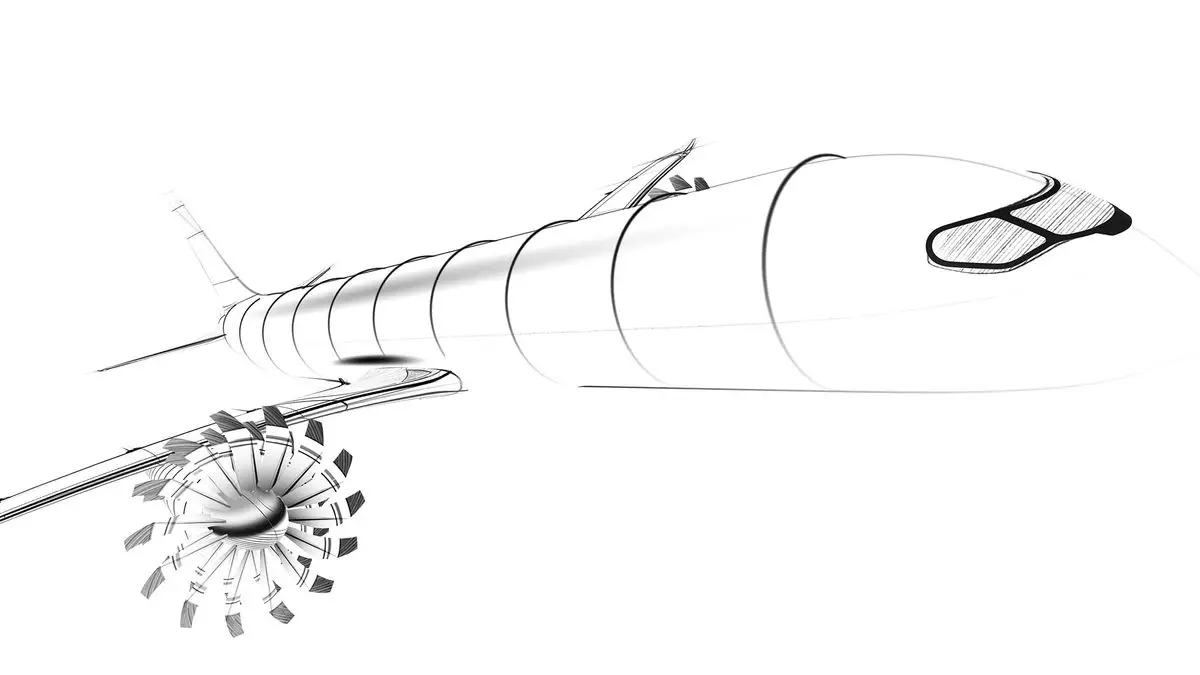Airbus is on the verge of a transformative breakthrough in aviation technology, aiming for a next-generation single-aisle aircraft that promises to enhance fuel efficiency by an impressive 20% to 30%. This ambitious project is not just a dream; it’s a strategic initiative aimed at addressing the pressing need for sustainable aviation, particularly as the global aviation sector faces mounting pressure to align with the United Nations’ goal of achieving net zero emissions by 2050. With an eye on the latter half of the 2030s for a potential rollout, Airbus has laid out a plan that hinges on a combination of advanced materials, groundbreaking engine designs, and innovative wing technologies.
The Engine of Innovation: Open Fan Technology
At the heart of Airbus’s vision lies a radical departure from conventional turbofan engines. The proposed open fan-propulsion system marks a significant shift from the traditional enclosed designs familiar to modern jets. This move towards larger fans, touted by Mohamed Ali, CFM International’s senior vice president of engineering, could drastically improve performance. However, one must consider the inherent challenges; the aviation industry has hit a near-capacity ceiling for fan size within enclosed spaces due to drag limitations. The open fan design promises to bypass these constraints entirely, making it a tantalizing option for future commercial jets. Early testing is already underway, with an ambitious target for the first flight using an A380 jet, scheduled for late in the decade.
Pushing Aerodynamics with Next-Gen Wing Designs
Another significant focal point is the wing design. Airbus is exploring folding wing technology, which could revolutionize aircraft aerodynamics. Sue Partridge, head of the Wing of Tomorrow program, envisions wings that are not only longer and more slender but also capable of folding for ground operations. The design mimics nature, drawing inspiration from the effortless flight of the albatross. Such innovation does not come without challenges—most airport infrastructures globally are not equipped to manage the extensive wingspans envisioned. To tackle this, Airbus has developed multiple wing demonstrators to test folding mechanisms, ensuring that operational logistics are handled seamlessly.
Material Innovations and Sustainably Powered Solutions
A pivotal component in achieving these ambitious efficiency metrics is the advancement of fuselage materials. Lighter and stronger materials will play a crucial role in reducing overall weight and increasing fuel efficiency. Beyond structural design, Airbus is also actively investigating hybrid-electric propulsion systems that could supplement traditional jet fuel. These innovative systems promise a reduction of carbon emissions by up to 5%, which is a significant step forward in hybrid aviation technology. This won’t translate into in-flight propulsion but will enhance various on-ground functions, ensuring a smoother transition to sustainable practices within aircraft operations.
Collaborative Efforts Towards Sustainable Aviation
The journey towards realizing this vision is not one that Airbus is undertaking in isolation. Collaboration with industry leaders like Safran and Daher is instrumental in pushing the boundaries of what is possible in aerospace innovation. A recent hybrid-electric demonstration flight stands testament to the potential of collaborative ventures in the field, showcasing the feasibility of integrating advanced power systems into aircraft design.
The Road Ahead: Challenges and Opportunities
However, amidst this optimistic vision lies a stark reminder of the obstacles that still loom. Despite the pioneering groundwork laid by Airbus, the development of next-generation aviation technology is still in its infancy. As Bruno Fichefeux aptly stated during the Airbus Summit in Toulouse, the industry is still gathering the “ingredients” necessary for crafting this complex “recipe” of innovation. The timeline is ambitious, and the road ahead is fraught with technical, regulatory, and infrastructural hurdles that must be navigated carefully.
Airbus’s journey toward a sustainable aviation future is characterized by ingenuity and collaboration, marking a bold step into an era where eco-conscious travel is becoming increasingly attainable. As technological advancements continue to unfold, the potential for a new generation of aircraft that not only meets but exceeds current standards of efficiency and environmental stewardship is brighter than ever.

